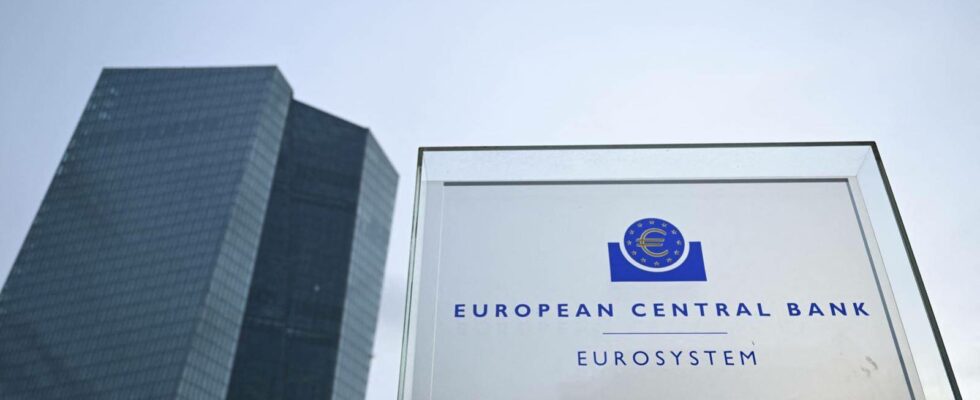(AFP / KIRILL KUDRYAVTSEV)
The year 2023, overall very positive for European banks, distinguished two types of establishments: those which were able to take full advantage of the tightening of monetary policy, and the others, including some French.
European banks “have experienced an impressive rebound, which could lead to the most profitable year ever recorded by the sector”, underlined Jan Schildbach, analyst at Deutsche Bank, in early January.
Italian and Spanish banks, with varied activities and locations, and also based on a variable rate credit model which makes it possible to immediately pass on the increase in interest rates from the European Central Bank (ECB), are posting sparkling results.
The Spanish banking giant Santander, for example, shattered its record with 11.08 billion euros in net profit in 2023 despite the impact of an exceptional tax introduced by Madrid.
Results deemed “indecent” by the consumer organization Facua, which relaunched the debate on the future of this tax, supposed to end in 2024.
In Italy, UniCredit and Intesa Sanpaolo also had an exceptional year in 2023, with respectively 9.5 billion and 7.7 billion euros in net profit, exceeding their objectives and analysts’ expectations.
All with a cost of risk (the sums provisioned to deal with possible unpaid debts on the credits granted) “which holds up surprisingly well”, underlines to AFP the analyst of the rating agency Fitch Ratings Rafael Quina.
– Stock market excitement –
Only BNP Paribas and the Crédit Agricole group have managed to reach this level of performance in France, with respectively nearly 11 billion and 8.26 billion euros in net profit last year.
If the most international players are doing better, it is because the French market is not the most promising for retail banking.
Due to a fixed rate credit policy, the benefit of the rate increase only applies to new loans and not the entire stock. Regulated savings, led by Livret A, also represent a cost for French banks.
BNP Paribas, Crédit Agricole, Crédit Mutuel Alliance Fédérale, BPCE and Société Générale, however, combined net income of nearly 28.5 billion euros last year, 6.5% more than in 2022 on a comparable basis.
The results also led to fairly strong movements on the stock market, illustrating the excitement of investors for the sector after a very favorable end to 2023 on the markets.
Despite a record annual profit, BNP Paribas suffered a drop of more than 9% in its stock price on the day it published its results, February 1.
Crédit Agricole SA, the listed entity of Crédit Agricole, showed a drop of more than 5% in its share price on Thursday around 1:45 p.m. despite once again an unprecedented net profit.
The Dutch giant ING, whose net profit almost doubled in 2023, also had a very bad day on the stock market on February 1, when it published its annual figures, losing more than 6%. Conversely, UniCredit’s results allowed the stock to gain more than 8% on February 5.
– On the floor –
The annual results season was also an opportunity for Société Générale and Deutsche Bank to announce cuts in their workforce: 3,500 fewer positions for the German company, which has been undergoing permanent restructuring since 2019, and 947 for the French bank, which is accumulating losses. departure plans for more than ten years.
Mr Quina is “not surprised by staff reductions in certain establishments whose performance is below the European average”.
All banks in France and Europe are today seeking to control their costs, agrees Elias Ghanem, financial services specialist at Capgemini.
This is the case “especially in retail banking, knowing that branches are excessively expensive and that the staff is important” he continues, interviewed by AFP.
The development of tools based on artificial intelligence and the automation of certain tasks “logically leads to a reduction in the intensity in terms of personnel in the banking sector”, adds Mr. Quina.
